Oren Cohen
Technion-Israel Institute of Technology
Single-shot X-ray ptychography as a structured illumination method
Oct 24, 2024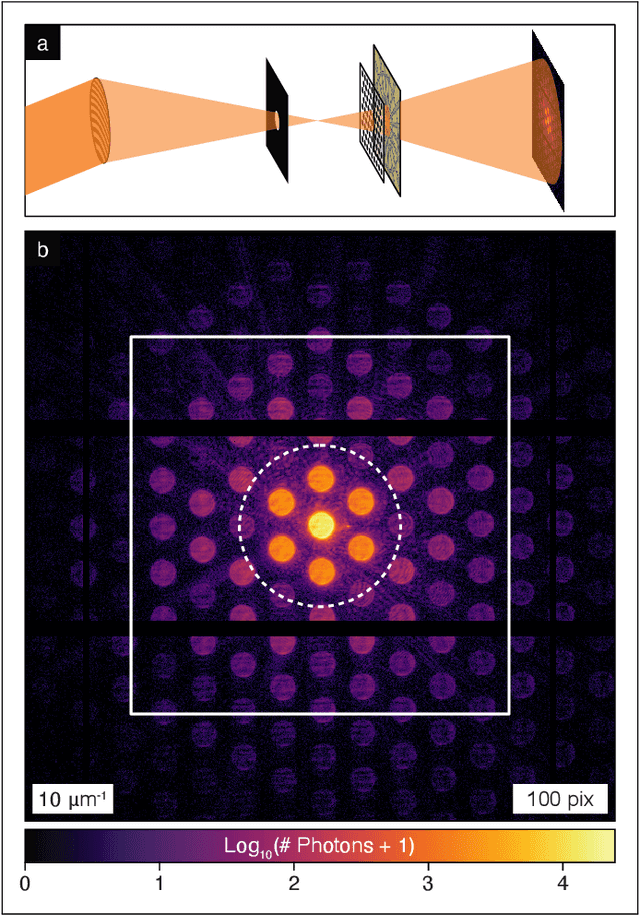
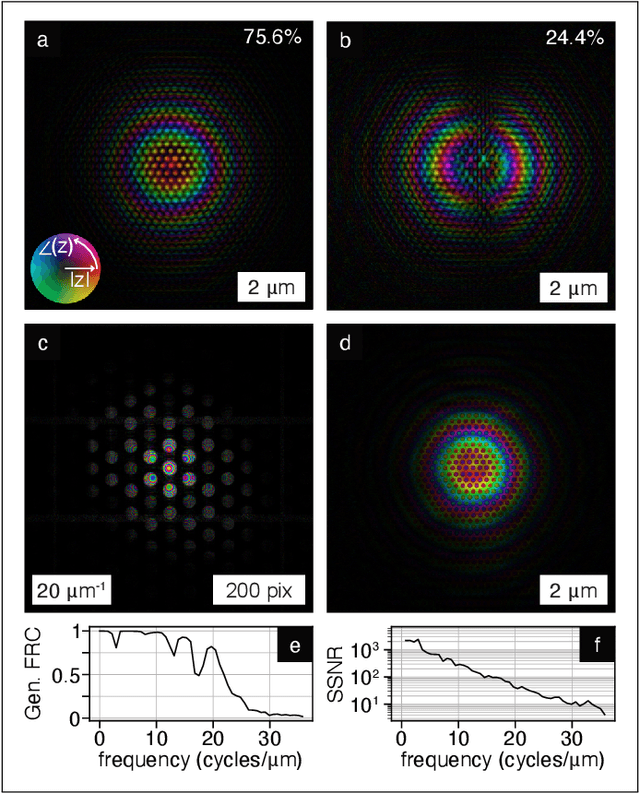
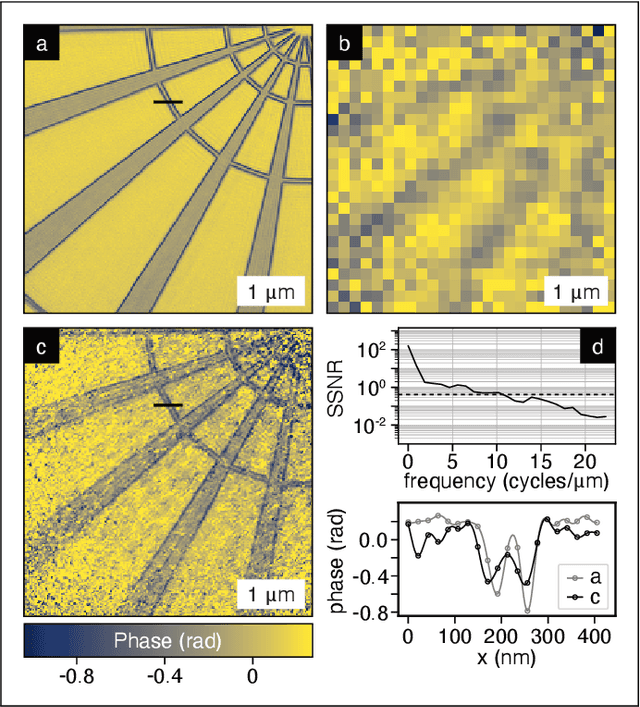
Abstract:Single-shot ptychography is a quantitative phase imaging method wherein overlapping beams of light arranged in a grid pattern simultaneously illuminate a sample, allowing a full ptychographic dataset to be collected in a single shot. It is primarily used at optical wavelengths, but there is interest in using it for X-ray imaging. However, the constraints imposed by X-ray optics have limited the resolution achievable to date. In this work, we reinterpret single-shot ptychography as a structured illumination method by viewing the grid of beams as a single, highly structured illumination function. Pre-calibrating this illumination and reconstructing single-shot data using the randomized probe imaging algorithm allows us to account for the overlap and coherent interference between the diffraction arising from each beam. We achieve a resolution 3.5 times finer than the numerical aperture-based limit imposed by traditional algorithms for single-shot ptychography. We argue that this reconstruction method will work better for most single-shot ptychography experiments and discuss the implications for the design of future single-shot X-ray microscopes.
Deep learning reconstruction of ultrashort pulses from 2D spatial intensity patterns recorded by an all-in-line system in a single-shot
Nov 23, 2019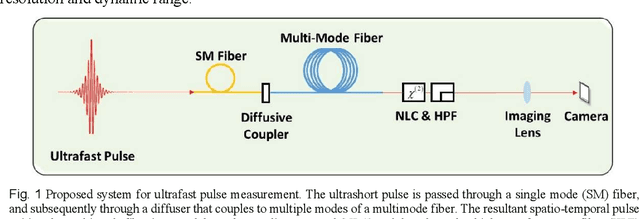
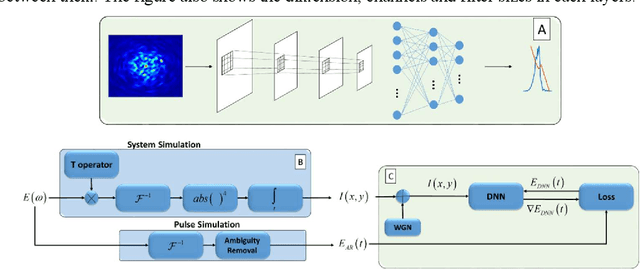
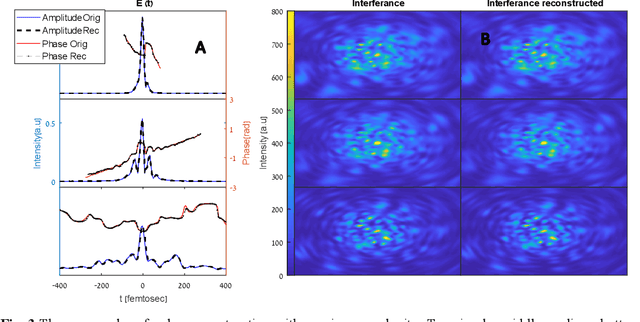
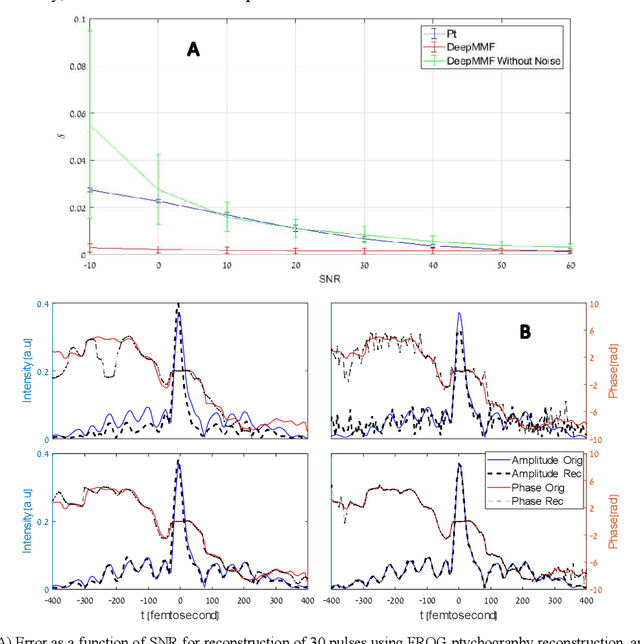
Abstract:We propose a simple all-in-line single-shot scheme for diagnostics of ultrashort laser pulses, consisting of a multi-mode fiber, a nonlinear crystal and a CCD camera. The system records a 2D spatial intensity pattern, from which the pulse shape (amplitude and phase) are recovered, through a fast Deep Learning algorithm. We explore this scheme in simulations and demonstrate the recovery of ultrashort pulses, robustness to noise in measurements and to inaccuracies in the parameters of the system components. Our technique mitigates the need for commonly used iterative optimization reconstruction methods, which are usually slow and hampered by the presence of noise. These features make our concept system advantageous for real time probing of ultrafast processes and noisy conditions. Moreover, this work exemplifies that using deep learning we can unlock new types of systems for pulse recovery.
Deep Learning Reconstruction of Ultra-Short Pulses
Mar 15, 2018
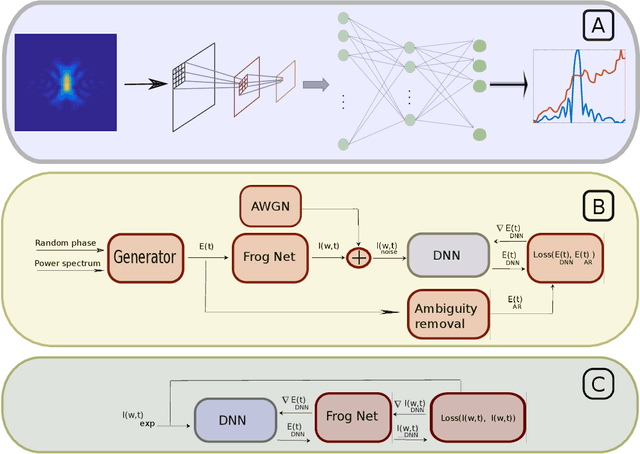


Abstract:Ultra-short laser pulses with femtosecond to attosecond pulse duration are the shortest systematic events humans can create. Characterization (amplitude and phase) of these pulses is a key ingredient in ultrafast science, e.g., exploring chemical reactions and electronic phase transitions. Here, we propose and demonstrate, numerically and experimentally, the first deep neural network technique to reconstruct ultra-short optical pulses. We anticipate that this approach will extend the range of ultrashort laser pulses that can be characterized, e.g., enabling to diagnose very weak attosecond pulses.
 Add to Chrome
Add to Chrome Add to Firefox
Add to Firefox Add to Edge
Add to Edge